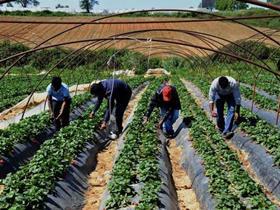
Fresh produce firms ceasing to trade is a distinct possibility as a result of the government’s newly-unveiled Living Wage model.
NFU chief horticultural adviser Chris Hartfield told FPJ that the plans are a “huge issue”, as they’re due to bring in “significant change in such a short period of time”. He added that he can “foresee a situation” where fruit and veg suppliers pack it in, with retailers and consumers unikely to absorb costs from further down the supply chain.
Chancellor George Osborne revealed in his 2015 Summer Budget that the compulsory Living Wage of £7.20 per hour will come into place from April 2016 for part-time and full-time workers aged 25 and above, rising to more than £9ph by 2020. It will replace the national minimum wage, which is currently £6.50 for those aged 21 and over.
Jack Ward, British Growers Association CEO, told FPJ that the move “further erodes competitiveness” for UK fresh produce suppliers already feeling the strain in a highly competitive global marketplace.
He pointed to the supermarket price war, uncertainty in the eurozone, which has had a detrimental impact on sterling’s exchange rate, and the fact produce output prices are operating around the zero inflation mark, compared to positive inflation on the input side: “Add these together and you already have problems,” Ward said.
“Now this imposed decision throws another challenge into the mix at a time when prices aren’t likely to increase to help suppliers find the additional cash they’ll need.”
Both Hartfield and Ward added that their respective bodies are looking to speak with the government about the plans, and relay concerns from those in the sector.
Chris Gedney, MD of brassica giant TH Clements, hopes the Living Wage will bring more mechanisation to the industry: “Now machinery manufacturers have the initiative to push forward with prototypes,” he said.
Meanwhile, Trevor Gregory, group finance director at fruit and veg supplier S&A Produce, said: “While the introduction of the Living Wage will add significantly to our costs, we believe that the increase may well assist us in recruiting our seasonal workforce.
'With the demise of the Seasonal Agricultural Workers Scheme from January 2014, we are now competing for labour on a European level, and as S&A recruits all of its seasonal labour directly without involvement from ‘middlemen’, this may well give us a competitive edge.”






No comments yet